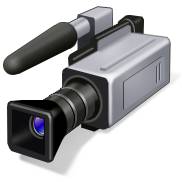Entries Tagged 'copywriting tips' ↓
February 28th, 2011 — b2b copywriter, conversion, copywriting tips, Google analytics, internet marketing, keywords, marketing, online marketing, website copywriting
 As an internet marketer you’ve probably heard people talking about traffic and conversion rates.
As an internet marketer you’ve probably heard people talking about traffic and conversion rates.
So what’s your conversion like?
Do you know?
Do you even care?
Well, if you want your online marketing to be effective you need to know and care what it is. But before you charge headlong into panic because your conversion isn’t as good as your neighbour’s, you need to consider what your conversion goal is.
Your conversion goal may well be different to your neighbour’s so don’t get hung up on who’s got the biggest just yet. First you have to work out what yours is. It could be:
- Newsletter sign-ups
- Order form completions
- Brochure downloads
- Signing up for a free trial
- Payments
Once you know what it is you’re measuring you can start to quantify the effectiveness of your website through Google Analytics.
But before you can achieve conversion you must have traffic. The information you obtain about your website through analytics will show you the number of visitors your website is receiving every day, week or month (that’s your traffic), how long they remain on your site, which keywords bring in the most traffic, which pages they visit etc.
You may think you’re doing brilliantly with your marketing because you are getting thousands of visitors to your website every month.
Great – but is that reflected in your sales or sign ups? If your traffic has suddenly jumped, has your turnover made the same leap? If not, something’s wrong because you’re not converting.
5 reasons why you’re not converting
1. Quantity not quality
You may be getting loads of visitors but if no one is buying something is seriously wrong. The first thing to check is your keywords.
Each page of your website should be targeting a different keyword. So if you are getting traffic but there are no conversions (and your bounce rate is very high), check your keywords as they may not be attracting the right readers.
2. Your promise isn’t delivering
Again this one goes back to your keywords.
In this instance you may be using a keyword that doesn’t actually reflect what’s on your webpage. Therefore visitors are arriving at your site expecting to see blue butterfly brooches but when they arrive all they find are blue brooches.
Therefore you have a mismatch between what you’re offering your visitors and the traffic your SEO efforts is targeting.
3. Now what?
One of the most common aspects of a web copy that is missed is the call to action.
If a visitor lands on your website, finds your content relevant and interesting you must make sure you tell them what to do next.
A well positioned, commanding call to action above the fold of your web page (so it’s in their eye line) will make sure your reader knows exactly what they must do next – whether it’s to buy, order, sign-up etc.
4. Boring…
If you’ve gone to the expense and trouble of developing a good SEO strategy you need a great website to wow your visitors when they find you.
If your web site is poorly structured with bad navigation, slow-loading pages and full of annoying pop-ups your visitors will flee.
This will reduce your conversion rates and boost your bounce rate – and that’s not good.
People want to see websites that are well designed, easy to navigate and a joy to use. These features will encourage them to stay and make them more likely to buy from you, sign-up to your newsletter or complete your survey.
5. What about you products?
Of course, your poor conversion rate may have nothing to do with the design of your website or the keywords you’re using. It could simply be because your products aren’t what your customers need.
You see web design and great copywriting will get you only so far – if you’ve poorly researched your market and are trying to sell something people don’t want, they won’t buy it. If you’ve checked everything else on this list and it all looks OK, maybe it’s time to consider whether your products and services satisfy the needs of your market.
As we’ve seen, your conversion rate (or lack of it) can be affected by a number of different factors. Your keywords, web copy, web design and products and services will all have their part to play. If you want targeted traffic and a great conversion rate they all have to be firing on all cylinders.
February 25th, 2011 — copywriting tips, internet marketing, marketing, script writing, Video marketing
 There’s still a lot of 2011 to get through so why not take this opportunity to offer your consumers something new.
There’s still a lot of 2011 to get through so why not take this opportunity to offer your consumers something new.
I’m sure by now you’re beginning to dabble in the wonderful world of social media – tipping your toes in Facebook and Twitter. But perhaps now’s the time to consider a new vein of marketing that will compliment your social media activities.
What am I talking about?
Video marketing.
I have already looked at why you should have video on your website, but this post is more concerned with the logistics behind video marketing.
A recent post on socialmediaexaminer.com called “5 Steps To Achieve Success With Video Marketing” talked about what you need to think about when moving into the video marketing arena.
Apart from how you’re going to create your videos and how you’re going to distribute them it’s very important to think about who will feature in your videos.
Whoever you get to take centre stage must be:
- Personable
- Dynamic
- Interesting
If they are monotone and have the appearance of a 1970s Open University Maths lecturer, they aren’t going to captivate and inspire your audience.
Once you’ve got your presenter(s) organised you then have to think about the content.
To get people to watch your videos you have to give them what they want, so ask them. Survey your colleagues and customers to find out what they want to learn about; what they will find useful. Once you have that sorted, how are you going to distribute your videos?
Leveraging the power of social media – YouTube, Twitter and Facebook, is a great way to gain exposure quickly.
To learn more about video marketing and how to go it well, pop over to Social Media Examiner by clicking the clink above and take your marketing strategy to a new level in 2011.
Sally Ormond is a freelance copywriter who creates compelling and persuasive copy for all online and off line marketing needs including video scripts.
February 18th, 2011 — copywriting tips, marketing, Press releases

The writing of press releases seems to be a dying art.
It’s not because they are very difficult to write; it’s not even because they are really difficult to get published.
No, it’s because they often get overlooked in favour of other forms of marketing.
But the press release still has a vital part to play in your marketing strategy. Whether you write them in-house or prefer to hire in a copywriter, below are a few tips on making sure you create a press release that’s eye-catching, informative and effective.
How to write a great press release
There are several crucial elements to a press release. The following 6 aspects must all be present in the creation process if your press release is to be successful.
Are you ready?
Here we go…
1. Hook
The first think to remember is that people aren’t going to read it just because it’s got press release written on it. That alone will not convince them that it’s worth reading.
To get someone to take time out of their busy day to read it, you must provide a hook to get them interested.
Think about what you are writing and who you want to read it. If it is a local press release see if you can tie its content to a local event. Your hook must engage you reader, arouse their curiosity and make them want to know more.
2. Headline
It’s all in the headline. If that doesn’t pique their interested they won’t read on.
Come up with one that addresses a concept rather than just starts with your brand name. So don’t follow the pack. Try and come up with something more creative.
3. No Jargon
Even if your press release is aimed at industry professionals, there is a fair chance it will also be read by non-industry bods. If you fill it with techno-babble and jargon you are limiting your audience.
Make sure you use simple language that is accessible to all. If you do have to use technical language don’t be afraid to provide an explanation of its meaning.
4. Resources
A great way to convince editors and journalists that your press release is the making of a great story is to add resources. Link out to other related information sources; provide video and images – basically everything they would need to craft a news story.
5. Proofread
Nothing will kill your credibility faster than a press release full of spelling and grammatical errors. Always read through your press release several times or get someone else to proofread for you.
6. Share
A press release isn’t a press release unless you share it. Send it to local publications, distribute it to online outlets, email it to interested parties and utilise your connections on social media.
These 6 tips will help you create newsworthy press releases that will be distributed far and wide to help you spread the word about your business.
February 16th, 2011 — blog, blogging, blogging for business, copywriting tips, internet marketing, marketing, online marketing
 Blogging has long been known as an effective promotional tool for businesses.
Blogging has long been known as an effective promotional tool for businesses.
Not only do they allow you to add numerous pages of great content to attract readers, they are also an excellent source of links and potential link bait.
Through your articles you can offer advice, build your repuation as an expert in your field and develop online relationships with your readers who, potentially, may become customers of the future.
On this blog I have looked at the art of blogging from many different angles including articles on:
Get Your Blogging Noticed
Can You Be a Great Blogger?
How To Become a Blogging Expert
The Holy Grail of Blogging
Better Blogging
I was interested to come across a really useful pots in socialmediaexaminer.com called 26 Ways to Enhance Your Blog Content.
The article runs through their 26 top tips related to the craft of blog writing and a number of critical factors that will help to ensure the production of high-quality posts. After all it’s only through the constant generation of interesting, well-written articles that you’ll attract a regular audience for your blog.
Grab a coffee and have a read and see how you can improve your blog content.
February 14th, 2011 — copywriter, copywriting tips, Writer
 This is a guest post by John Brooks, a writer at Office Kitten where he reviews office furniture, business equipment and stationery online.If you are interested in writing a guest post for Freelance Copywriter’s Blog then please get in touch with your ideas/outlines.
This is a guest post by John Brooks, a writer at Office Kitten where he reviews office furniture, business equipment and stationery online.If you are interested in writing a guest post for Freelance Copywriter’s Blog then please get in touch with your ideas/outlines.
Writing is a job like any other. You have to set up the right work environment in order to start, build, and finish your writing task.
Could a welder weld in an office cubicle? Could an accountant add up a column of figures on the pitching deck of a fishing boat in the middle of an ocean storm? Could a commercial fisherman cast a net in a city street, and expect any fish? Of course not!
A professional copywriter or business writer has to set up the proper work environment for the task of writing. Here’s some tips on what to think about:
1. Pick a Writing Work Area
Pick somewhere where you will be both comfortable and efficient for hours at a time. The place should allow you to concentrate only on your writing, and not get involved in some non-related task. Physically separate your writing life from your family life, and from all other aspects of your life, and you’ll be able to accomplish much more than you realise.
2. Minimise All Distractions
Keep distractions out of your work area. Do not have a television nearby. Keep other people out, which also means you should not pick a work space through which people are continually moving. Have a clear uncluttered space in front of you in which you will do your writing. Limit the number of distracting objects within your line of sight.
3. Set Up the Right Lighting
Your work space should have enough light, whether from external windows or from electric lights, to prevent eyestrain. One good test is to see if you can read the smallest print in a magazine’s table of contents while seated in your work space. If not, you need to add some more lighting. In addition to being functional, good lighting will also improve your mood.
4. Make Your Desk and Chair Ergonomic
Your chair should be adjustable, with a high back and wheels. Both your spine and your weight should feel fully supported by your chair – you do not want to feel as if you’re about to topple over when seated. On your desk, your computer screen should be a bit less than three feet away from your eyes, and slightly below your line of vision – but not so low that you have to dip your head down to read the screen. Organise your desk accessories and your phone according to whether you’re left-handed or right-handed.
5. Organise Your Cabling
This point may seem minor, but, once you organise and label the innumerable cables and wires under your work area (and away from your legs), you’ll appreciate the effort when the time comes to unplug one thing and plug in another. What could turn into a major all-day task then turns in something you can do in a matter of seconds. And an ample supply of time is the best resource a professional writer can have.
6. Optimise the Ambient Sound
Some people think that insulating oneself from all sound is an absolute requirement for creativity. However, a lack of sound can be just as distracting as a jackhammer. Keep some soothing music, or nature sounds, playing while you work – avoid popular music or songs that you’ll sing along with. Some classical music, perhaps Brahms or Chopin, is always a good choice.
7. Organise Your Papers
Even in an endeavour as creative as writing, there’s paper. Keep your working papers organised with folders, your label maker, and colour-coded tabs. Rather than having piles of paper on your desk, invest in a hanging file that you can install on the wall. If there’s not enough storage space there, get a small file cabinet and place it close to your desk so that you can wheel over in your chair, and easily pull out what you want.
8. Keep Your Resources Handy
Keep those books you’re using for research nearby, but not scattered all over your desk – a small open plastic cube is perfect for storing books. Use your wall space as a resource – some writers use a whiteboard or a large piece of paper tacked to the wall to keep track of the larger context in which they’re doing their current task.
9. Check Your Internet Access
Internet access is a must nowadays – make sure you can get to the Internet with your computer from your work space, whether your access is by cable or is wireless.
10. Take a Break
Stop, get up out of your chair, and stretch every so often. Get up and take a short walk, even it’s only across the room to get a cup of coffee from the coffeepot. Take a long look at the view outside the window, or glance at this month’s calendar page of a beautiful landscape. Then settle back into your chair, and get back to work.
 As an internet marketer you’ve probably heard people talking about traffic and conversion rates.
As an internet marketer you’ve probably heard people talking about traffic and conversion rates. There’s still a lot of 2011 to get through so why not take this opportunity to offer your consumers something new.
There’s still a lot of 2011 to get through so why not take this opportunity to offer your consumers something new.
 Blogging has long been known as an effective promotional tool for businesses.
Blogging has long been known as an effective promotional tool for businesses.





